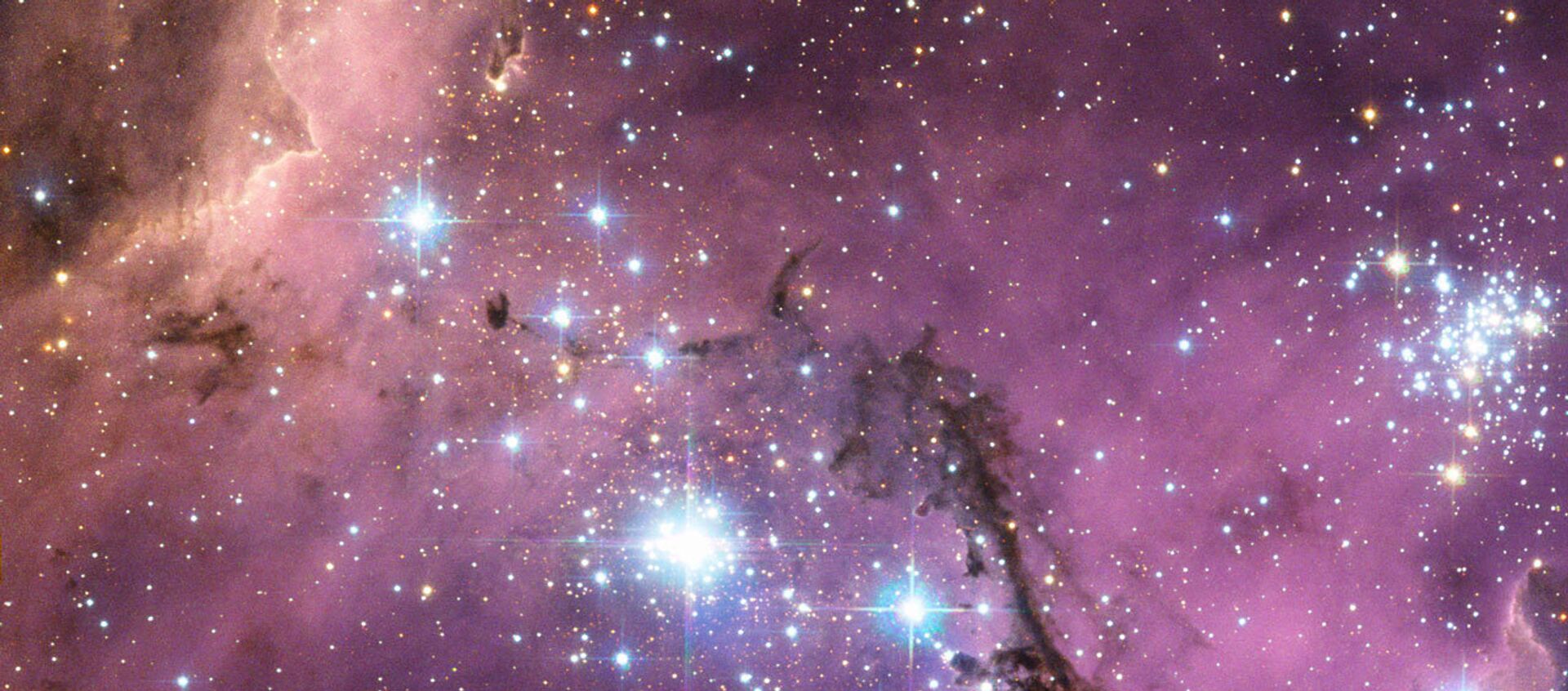https://sputnikglobe.com/20210918/researchers-find-part-of-universes-missing-ordinary-matter-1089177382.html
Researchers Find Part of Universe's Missing 'Ordinary' Matter
Researchers Find Part of Universe's Missing 'Ordinary' Matter
Sputnik International
The missing matter is baryonic, or so-called 'ordinary' matter, such as the protons and neutrons that make up all of the elements in planets, stars and our... 18.09.2021, Sputnik International
2021-09-18T03:41+0000
2021-09-18T03:41+0000
2023-04-12T16:59+0000
dark matter
scientists
matter
universe
science & tech
space
https://cdn1.img.sputnikglobe.com/img/07e5/09/12/1089177461_0:261:2800:1836_1920x0_80_0_0_eee9a7f40ce80613089484a174fdf1bd.jpg
An international research team led on the French side by the Centre National de la Recherche Scientifique (CNRS) and l'Universite Claude Bernard Lyon 1, has for the first time mapped a galactic wind using the Multi Unit Spectroscopic Explorer (MUSE) instrument from the European Southern Observatory's (ESO) Very Large Telescope, the group announced.According to the statement, the observation, documented in research published in Monthly Notices of the Royal Astronomical Society (MNRAS) on September 16, assisted in revealing the whereabouts of part of the Universe's missing matter and observing the creation of a nebula - a cloud of gas and interstellar dust - around a galaxy.The researchers chose galaxy Gal1 because it was close to a quasar (a very luminous active galactic nucleus), which functioned as a 'lighthouse' for the scientists, pointing them to the study area. They also planned to view a nebula in the vicinity of this galaxy, albeit the success of this observation was considered doubtful due to the nebula's unknown luminosity.According to the study, this kind of normal matter nebula is well-known in the nearby Universe, but its existence for young galaxies in creation was only previously assumed.Researchers noted that galaxies "can receive and exchange matter with their external environment thanks to the galactic winds created by stellar explosions." They add that one of the most difficult aspects of understanding galaxies is that about 80% of the baryons that make up the regular matter of galaxies are missing. It is now thought that baryons were ejected from galaxies into intergalactic space, according to simulations, by galactic winds caused by star explosions.
https://sputnikglobe.com/20200530/mysterious-fast-radio-bursts-help-scientists-to-detect-missing-matter-in-the-universe--1079465676.html
Sputnik International
feedback@sputniknews.com
+74956456601
MIA „Rosiya Segodnya“
2021
News
en_EN
Sputnik International
feedback@sputniknews.com
+74956456601
MIA „Rosiya Segodnya“
Sputnik International
feedback@sputniknews.com
+74956456601
MIA „Rosiya Segodnya“
dark matter, scientists, matter, universe, science & tech, space
dark matter, scientists, matter, universe, science & tech, space
Researchers Find Part of Universe's Missing 'Ordinary' Matter
03:41 GMT 18.09.2021 (Updated: 16:59 GMT 12.04.2023) Kirill Kurevlev
Managing Editor
The missing matter is baryonic, or so-called 'ordinary' matter, such as the protons and neutrons that make up all of the elements in planets, stars and our bodies. It is not the same as dark matter, which is still a mystery and is thought to make up around 85% of all matter in the universe.
An international research team led on the French side by the Centre National de la Recherche Scientifique (CNRS) and l'Universite Claude Bernard Lyon 1, has for the first time mapped a galactic wind using the Multi Unit Spectroscopic Explorer (MUSE) instrument from the European Southern Observatory's (ESO) Very Large Telescope, the group
announced.
According to the statement, the observation, documented in research published in
Monthly Notices of the Royal Astronomical Society (MNRAS) on September 16, assisted in revealing the whereabouts of part of the Universe's missing matter and observing the creation of a nebula - a cloud of gas and interstellar dust - around a galaxy.
The researchers chose galaxy Gal1 because it was
close to a quasar (a very luminous active galactic nucleus), which functioned as a 'lighthouse' for the scientists, pointing them to the study area. They also planned to view a nebula in the vicinity of this galaxy, albeit the success of this observation was considered doubtful due to the nebula's unknown luminosity.
"The perfect positioning of the galaxy and the quasar, as well as the discovery of gas exchange due to galactic winds, made it possible to draw up a unique map," the scientists said. "This enabled the first observation of a nebula in formation that is simultaneously emitting and absorbing magnesium—some of the Universe’s missing baryons—with the Gal1 galaxy."
According to the study, this kind of normal matter nebula is well-known in the nearby Universe, but its existence for young galaxies in creation was only previously assumed.
"Scientists thus discovered some of the Universe’s missing baryons, thereby confirming that 80–90% of normal matter is located outside of galaxies, an observation that will help expand models for the evolution of galaxies," the press release concluded.
Researchers noted that galaxies "can receive and exchange matter with their external environment thanks to the galactic winds created by stellar explosions." They add that one of the most difficult aspects of understanding galaxies is that about 80% of the baryons that make up the regular matter of galaxies
are missing.
It is now thought that baryons were ejected from galaxies into intergalactic space, according to simulations, by galactic winds caused by star explosions.




